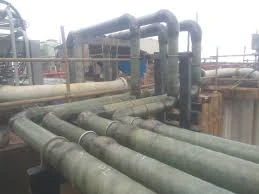
-
 Afrikaans
Afrikaans -
 Albanian
Albanian -
 Amharic
Amharic -
 Arabic
Arabic -
 Armenian
Armenian -
 Azerbaijani
Azerbaijani -
 Basque
Basque -
 Belarusian
Belarusian -
 Bengali
Bengali -
 Bosnian
Bosnian -
 Bulgarian
Bulgarian -
 Catalan
Catalan -
 Cebuano
Cebuano -
 China
China -
 China (Taiwan)
China (Taiwan) -
 Corsican
Corsican -
 Croatian
Croatian -
 Czech
Czech -
 Danish
Danish -
 Dutch
Dutch -
 English
English -
 Esperanto
Esperanto -
 Estonian
Estonian -
 Finnish
Finnish -
 French
French -
 Frisian
Frisian -
 Galician
Galician -
 Georgian
Georgian -
 German
German -
 Greek
Greek -
 Gujarati
Gujarati -
 Haitian Creole
Haitian Creole -
 hausa
hausa -
 hawaiian
hawaiian -
 Hebrew
Hebrew -
 Hindi
Hindi -
 Miao
Miao -
 Hungarian
Hungarian -
 Icelandic
Icelandic -
 igbo
igbo -
 Indonesian
Indonesian -
 irish
irish -
 Italian
Italian -
 Japanese
Japanese -
 Javanese
Javanese -
 Kannada
Kannada -
 kazakh
kazakh -
 Khmer
Khmer -
 Rwandese
Rwandese -
 Korean
Korean -
 Kurdish
Kurdish -
 Kyrgyz
Kyrgyz -
 Lao
Lao -
 Latin
Latin -
 Latvian
Latvian -
 Lithuanian
Lithuanian -
 Luxembourgish
Luxembourgish -
 Macedonian
Macedonian -
 Malgashi
Malgashi -
 Malay
Malay -
 Malayalam
Malayalam -
 Maltese
Maltese -
 Maori
Maori -
 Marathi
Marathi -
 Mongolian
Mongolian -
 Myanmar
Myanmar -
 Nepali
Nepali -
 Norwegian
Norwegian -
 Norwegian
Norwegian -
 Occitan
Occitan -
 Pashto
Pashto -
 Persian
Persian -
 Polish
Polish -
 Portuguese
Portuguese -
 Punjabi
Punjabi -
 Romanian
Romanian -
 Russian
Russian -
 Samoan
Samoan -
 Scottish Gaelic
Scottish Gaelic -
 Serbian
Serbian -
 Sesotho
Sesotho -
 Shona
Shona -
 Sindhi
Sindhi -
 Sinhala
Sinhala -
 Slovak
Slovak -
 Slovenian
Slovenian -
 Somali
Somali -
 Spanish
Spanish -
 Sundanese
Sundanese -
 Swahili
Swahili -
 Swedish
Swedish -
 Tagalog
Tagalog -
 Tajik
Tajik -
 Tamil
Tamil -
 Tatar
Tatar -
 Telugu
Telugu -
 Thai
Thai -
 Turkish
Turkish -
 Turkmen
Turkmen -
 Ukrainian
Ukrainian -
 Urdu
Urdu -
 Uighur
Uighur -
 Uzbek
Uzbek -
 Vietnamese
Vietnamese -
 Welsh
Welsh -
 Bantu
Bantu -
 Yiddish
Yiddish -
 Yoruba
Yoruba -
 Zulu
Zulu
Advanced Fiberglass Solutions for Efficient Sewage Treatment and Wastewater Management Techniques
The Role of Fiberglass in Sewage Treatment An Innovative Solution for Wastewater Management
In recent years, the growing challenges of wastewater management have prompted the search for more efficient and sustainable solutions. Among the various materials being utilized in this sector, fiberglass has emerged as a prominent choice due to its unique properties and advantages. This article explores the role of fiberglass in sewage treatment, highlighting its benefits, applications, and the transformative impact it has on wastewater processing.
Fiberglass, a composite material made from a polymer matrix reinforced with glass fibers, is known for its exceptional durability, resistance to corrosion, and lightweight characteristics. These properties make it an ideal material for use in various components of sewage treatment systems, such as tanks, pipes, and filters. Unlike traditional materials like concrete or metal, fiberglass can withstand the harsh chemical environments typically found in wastewater without deteriorating, ensuring a longer lifespan and reduced maintenance costs.
The Role of Fiberglass in Sewage Treatment An Innovative Solution for Wastewater Management
Additionally, fiberglass-reinforced plastic (FRP) is increasingly being used for pipes in sewage systems. Traditional piping materials often succumb to corrosion due to the chemicals present in sewage, leading to leaks and structural failures. However, fiberglass pipes offer superior resistance to corrosion and reduced friction, which can improve flow rates and reduce energy consumption. These pipes are also less prone to cracking, making them a reliable choice for underground installations where conditions can be unpredictable.
sewage treatment fiberglass

The use of fiberglass in filtration systems is another area where its advantages are evident. Fiberglass filters can effectively remove suspended solids and pollutants from wastewater, aiding in the overall treatment process. The high surface area provided by the glass fibers enhances filtration efficiency, allowing for better capture of impurities. Furthermore, fiberglass filters can be easily cleaned or replaced, ensuring consistent performance without the need for extensive downtime.
Another significant benefit of incorporating fiberglass into sewage treatment systems is its environmental impact. As the global focus shifts towards sustainable practices, the durability and longevity of fiberglass components can lead to reduced resource consumption and waste generation. Moreover, with its ability to enhance treatment efficiency, fiberglass technology contributes to improving water quality before it's returned to the environment, helping to protect ecosystems and public health.
The effectiveness of fiberglass in sewage treatment systems has not gone unnoticed, with increasing research and innovation directed at this versatile material. Ongoing advancements aim to enhance its properties further, such as developing new formulations that improve its performance even in the most demanding conditions. Additionally, efforts to recycle and repurpose fiberglass waste are gaining traction, aligning with the circular economy principles that are crucial in today’s environmental landscape.
In conclusion, fiberglass is reshaping the sewage treatment landscape by providing a durable, flexible, and efficient alternative to traditional materials. Its applications in aeration tanks, piping, and filtration systems present unique benefits that contribute to improved wastewater treatment processes. As we continue to face challenges related to population growth and environmental sustainability, embracing innovative materials like fiberglass will be crucial in developing smart wastewater management solutions. By harnessing the strengths of fiberglass, we move closer to achieving a cleaner, safer environment for future generations.









